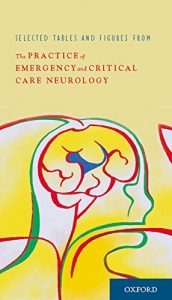The Practice of Emergency and Critical Care Neurology serves as the definitive authoritative reference on the care of the patient with a critical neurologic disorder at risk of deterioration and in need of immediate attention. This work is an expanded new edition of the book on the management of patients with critical neurologic disorders. This single-authored monograph is broad in scope and follows the patients from the very moment they enter the emergency department to their care in the neurosciences intensive care unit.
This book condenses the essential information into several sections. These are: The General Principles of Recognition of Critically Ill Neurologic Patients in the Emergency Department, The Evaluation of Presenting Symptoms Indicating Urgency and Critical Emergency, General Principles of Management of Critically Ill Patients, Monitoring Devices and Diagnostic Tests, Complete Management of Specific Disorders in the Neurosciences Intensive Care Unit, Postoperative Neurosurgical and Neurointerventional Complications, Management of Medical Complications and End of Life Care.
This accessibly written book differs from the conventional by specifically following the time course of clinical complexities as they emerge and change. It offers advice on how to diagnose and manage acute neuromuscular respiratory failure, acute worrisome headache, acute febrile confusion, acute diplopia, acute movement disorders, acute paraplegia, seizures and coma of uncertain cause in the emergency department. The major disorders requiring neurocritical care are covered in great detail and include traumatic brain injury aneurysmal subarachnoid hemorrhage, cerebral hemorrhage, hemispheric ischemic stroke, basilar artery occlusion, acute bacterial meningitis and encephalitis, myasthenic crisis and severe Guillan Barre syndrome. This book comes with a pocket book of selected tables and figures. This booklet covers all essential points for quick reference and has been considered a 'survival guide' for the house staff.
This book condenses the essential information into several sections. These are: The General Principles of Recognition of Critically Ill Neurologic Patients in the Emergency Department, The Evaluation of Presenting Symptoms Indicating Urgency and Critical Emergency, General Principles of Management of Critically Ill Patients, Monitoring Devices and Diagnostic Tests, Complete Management of Specific Disorders in the Neurosciences Intensive Care Unit, Postoperative Neurosurgical and Neurointerventional Complications, Management of Medical Complications and End of Life Care.
This accessibly written book differs from the conventional by specifically following the time course of clinical complexities as they emerge and change. It offers advice on how to diagnose and manage acute neuromuscular respiratory failure, acute worrisome headache, acute febrile confusion, acute diplopia, acute movement disorders, acute paraplegia, seizures and coma of uncertain cause in the emergency department. The major disorders requiring neurocritical care are covered in great detail and include traumatic brain injury aneurysmal subarachnoid hemorrhage, cerebral hemorrhage, hemispheric ischemic stroke, basilar artery occlusion, acute bacterial meningitis and encephalitis, myasthenic crisis and severe Guillan Barre syndrome. This book comes with a pocket book of selected tables and figures. This booklet covers all essential points for quick reference and has been considered a 'survival guide' for the house staff.












